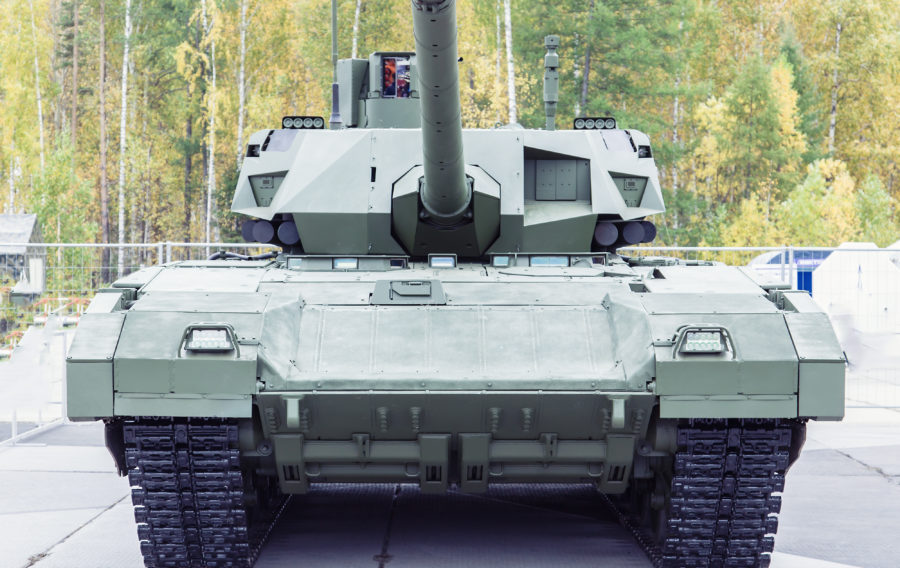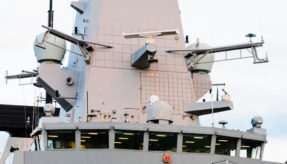
The new Russian T-14 Armata has got Western anti-tank specialists scratching their heads over how to defeat its varied defensive systems. However, the problem of overcoming ‘active armour’ on earlier Russian tank variants is one that was addressed as far back as 1989, by German weapons manufacturer, Rheinmetall W&M GmbH.
Specifically, Rheinmetall came up with the idea of a ‘tandem warhead’, the details of which were declassified recently and published as UK patent number GB 2517656. Figure 1 of the patent illustrating the concept is shown below.

The tandem warhead (10) works by providing an initial charge, delivered from a location towards the front of the device (11) and a further, main charge (12), which follows its direction of flight. The warhead includes a detonation delay device (17) controlling both the first and second charges, and four range finders (31-34), which ascertain the distance co-ordinates between the warhead and the target during flight. The detonation delay device uses the range finders to work out the angle of attack in relation to a specific target. It then uses this information to calculate a detonation delay time between the two charges, taking into account the predetermined ‘curve’ of the warhead in flight.
The operation of the tandem warhead is based on the fact that the angle of attack is calculated before the warhead makes impact on the target. The delay time between the detonation of the front and main charge is then selected on the basis of this calculation. This process helps to avoid the possibility that parts of the warhead – particularly of the active armour module (20), which are scattered following the penetration by the front charge – damage or destroy the main charge before it has had chance to detonate.
As this example shows, the answer to today’s engineering problem may have already been found, if you know where to look. Sometimes you have to look back before you can move forward.
By Nick Wallin, partner and patent attorney at intellectual property firm, Withers & Rogers.
If you would like to join our community and read more articles like this then please click here.







